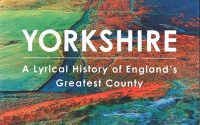What’s on : Lectures
Event Information
Archaeology and Ideas of Progress in 1970s York
Guest Speaker: Richard Morris
York Archaeological Trust (now York Archaeology) was brought into being in 1972 to record traces of the city’s past before their erasure by development and to share its findings with the public. Three years later, Friends of the Trust was formed to support that work.
Celebrating the Friends’ 50th anniversary, author and archaeologist Richard Morris revisits and reflects on 1970s York. His talk will evoke the city’s condition, controversies and personalities on the eve of York Archaeological Trust’s formation; recall planners’ post-war ambitions for historic cities and York in particular; and examine the character and achievements of the Trust’s first campaigns. From the outset the Trust took an integrated approach, putting excavation, environmental and material sciences, study of written records, historical topography and buildings into conversation. Discover how, with notable gifts for promotion, York Archaeological Trust was quick to share that breadth and themes arising from it with York’s people, and before long, with the rest of Britain and the world.
This talk is presented by Friends of York Archaeology and made possible through the generous support of partners Yorkshire Philosophical Society.
This is an event for the “York 2025 Festival of Ideas”.
About the speaker
Author and archaeologist Richard Morris watched the formation of the York Archaeological Trust while working at York Minster in 1971-74 – a time recalled in his books Time’s Anvil (2012), Yorkshire (2018) and Evensong (2021). He has since worked as a university teacher, helped to bring archaeological advice to Britain’s churches, contributed to battlefield archaeology, led the Council for British Archaeology, and championed public engagement with historical research. Today he is Professor (Emeritus) at the University of Huddersfield.
To be held in the Tempest Anderson Lecture Theatre in the Yorkshire Museum at 2.30pm on Wednesday 11th June.
Member’s report
To mark the 50th anniversary of the Friends of the York Archaeological Trust Richard Morris provided the Society with a lecture which covered the intellectual and cultural context in which the both the Trust and the Friends were established in early 1970s York.
Using his experience as a young archaeologist working on York Minster at that time, and his later role as Director of the Council for British Archaeology, he rehearsed the relationship between conservation and town planning in the post War years within the context of the need to replace much sub-standard and bomb damaged housing in British cities. Although the listing of historic buildings had begun as early as 1948, concentrating on medieval buildings, the pressure on planners for slum clearance was great and, as at Glasgow and elsewhere, whole communities were relocated from city centres to high rise developments, only to be replaced by elaborate road systems which carved up and isolated enclaves within the city centre.
Using a 1950s motoring map which showed the main A64 and A19 routes still pushing through the centre of the city along Goodramgate and Parliament Street, he showed that York was not immune to the potential of traffic blight. The 1950s plan for the City of York tried to answer this problem by the construction of an inner ring road carving its way around the city walls and removing much of the Victorian housing and commercial property along that route. Opposition to this plan was fierce, based on the belief that it would cut off the preserved historic centre of the city from its suburbs, and thus its residents, by the construction of traffic ring, much as was the case at Norwich. The plan remained on the stocks, however, until it was finally rejected by the Labour Government in 1974.
What had happened? Well, a number of things: during the 1960s and early 70s archaeologists and architectural historians had begun to identify their common interests in heritage, influenced in part by the growth of industrial archaeology; the Buchanan report on Historic Towns and Conservation has led to the Esher Report, specifically on York, in 1968, which examined the problems in terms of conservation areas rather than of particular buildings; the work of enlightened town planners, such as June Hargreaves, in the development of planning models provided a sympathetic local context which was given firm scholarly underpinning by the work of the Royal Commission on Historic Buildings in York, which began to produce its volumes from 1962. Local impetus was provided by individuals such as Patrick Nuttgens, Director of the new university’s Institute for Advanced Architectural Studies, and by Maurice Barley, Chairman on the embryonic York Archaeological Trust, so that by 1972 the stage was set for the role of archaeology to be recognised not only as an important part of preserving York’s past, but also as a significant contributor to its future economic and cultural well-being.
Bill Sheils



